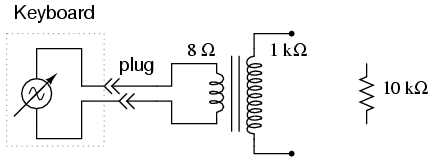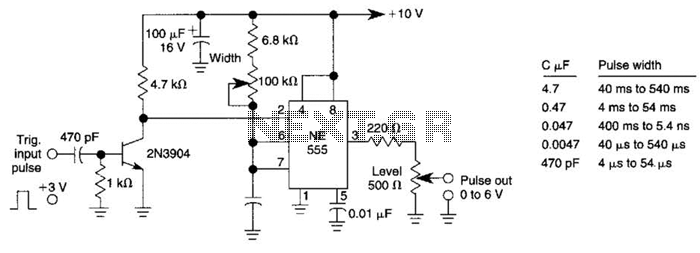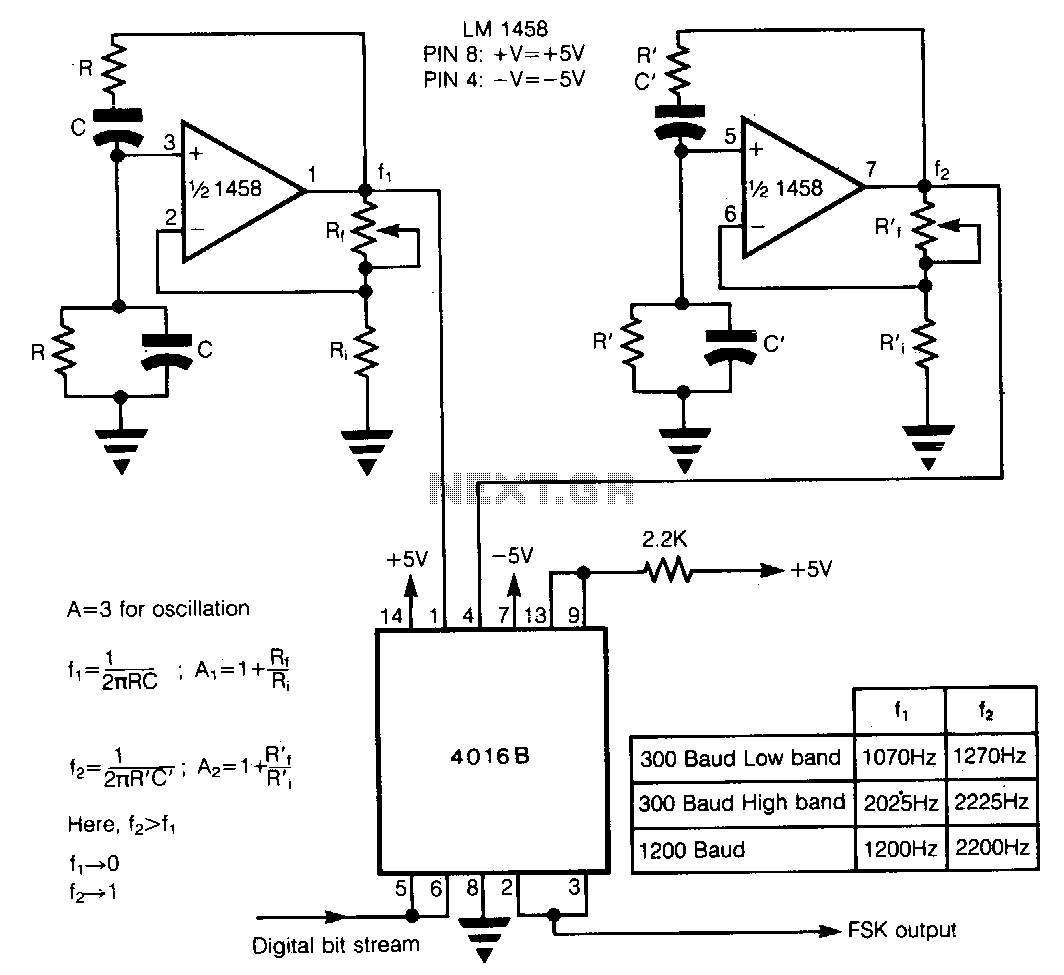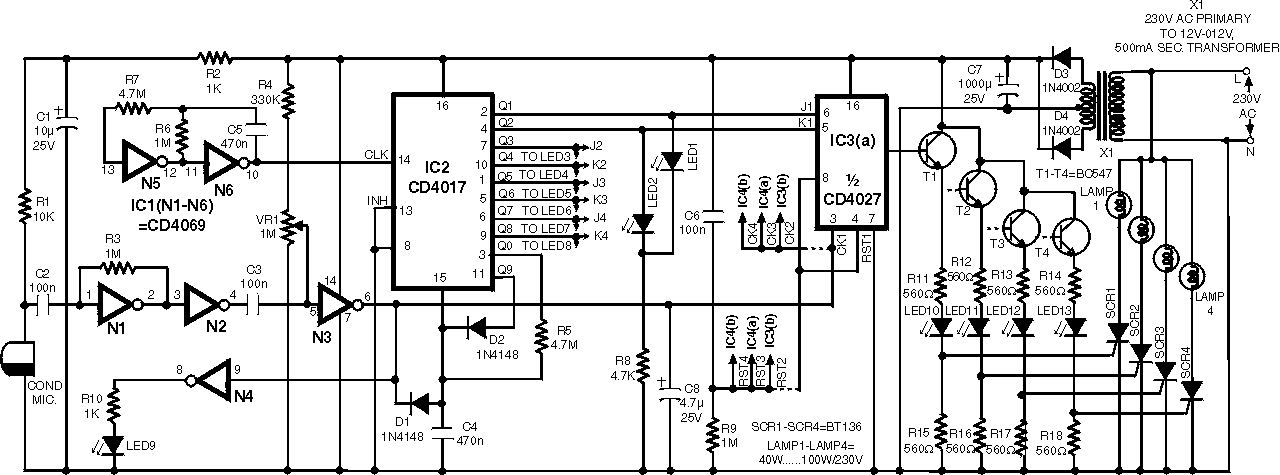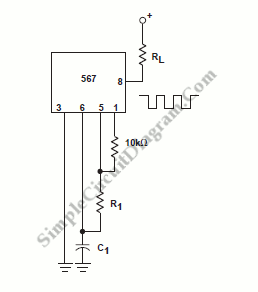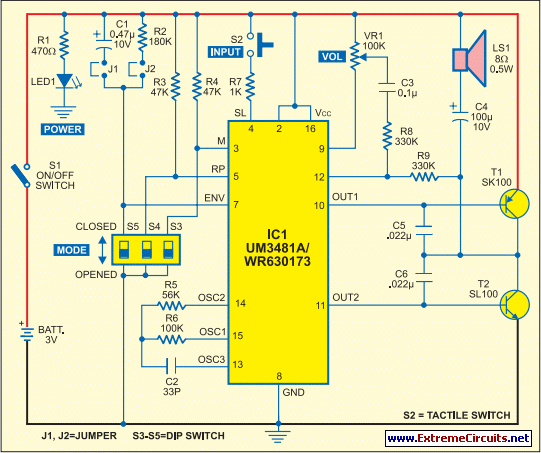
Sound effects generator
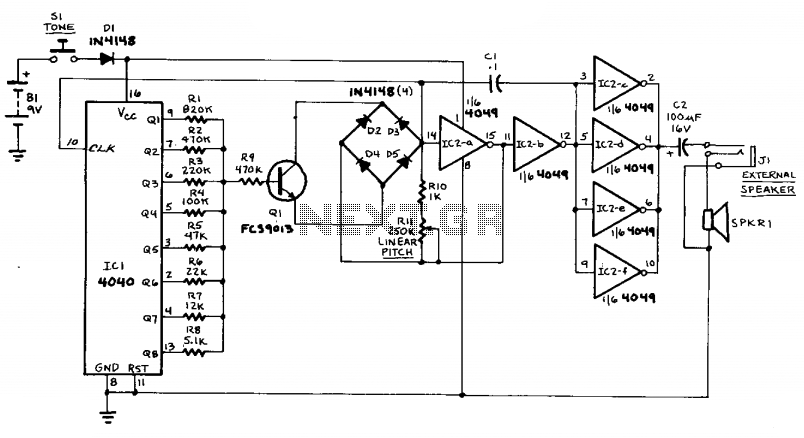
This circuit can generate sounds such as a European police-car siren, bird noises, and spaceship sounds. It can also function as a doorbell or an alarm. The circuit consists of four main components: a binary counter, a digital-to-analog (D/A) converter, a voltage-controlled oscillator (VCO), and an audio output amplifier. The initial frequency of oscillation is set by potentiometer R11. The VCO starts oscillating at a low frequency and gradually increases in speed as the control voltage from the D/A converter rises. The D/A converter is formed by a series of resistors (R1-R8). When none of the outputs from IC1 are active, minimal current flows into the base of transistor Q1, resulting in a low control voltage for the VCO. As more outputs from the counter become active, the base current increases, which in turn raises the frequency of the VCO's oscillation. The VCO is built using components IC2-a, IC2-b, Q1, and a timing network that includes diodes D1-D4, capacitor C1, resistor R10, and potentiometer R11. The buffer amplifier consists of the remaining four gates from IC2, configured in parallel.
The circuit is designed to produce a variety of audio outputs through the modulation of frequencies, making it versatile for different applications. The binary counter, likely implemented using a standard counter IC, serves to generate a sequence of binary values that control the D/A converter. The D/A converter translates these binary values into corresponding voltage levels that modulate the VCO. The VCO generates a waveform whose frequency is proportional to the control voltage it receives, allowing for a dynamic range of sound frequencies.
The timing network associated with the VCO is critical for determining the oscillation characteristics. The combination of diodes, capacitors, and resistors in this network shapes the waveform and affects the frequency response. The use of a potentiometer (R11) allows for user adjustment of the initial frequency, providing flexibility in sound generation.
The audio output amplifier enhances the signal from the VCO, ensuring that the sound produced is loud enough for practical applications such as alarms or alerts. The parallel configuration of the buffer amplifier gates ensures that the output signal is robust and can drive speakers or other audio output devices effectively.
Overall, this circuit showcases a practical application of digital and analog components to generate a variety of sound effects, demonstrating the integration of different electronic principles to achieve a versatile audio output system.This circuit can generate a European police-car siren, bird noises, spaceship sounds, etc. In addition, it can be put to use as a doorbell, an alarm, etc. The circuit consists of four parts: a binary counter, a D/A converter, a VCO, and an audio output amplifier. The initial frequency of oscillation is determined by potentiometer Rll. The VCO first oscillates at a relatively low frequency, and gradually picks up speed as the control voltage supplied by the D/A converter increases.
The D/A converter is the group of resistors R1-R8. When none of ICl's outputs is active, little current will flow into the base of Ql, so the VCO's control voltage will be low. As more and more counter outputs become active, base cutrent increases,and thereby so does the VCO's frequency of oscillation.
The VCO itself is composed of IC2-a, IC2-b, Ql, and the timing network comprisingD1-D4, Cl, RIO, and Rll. The buffer amplifier is made up of the four remaining gates from IC2, all wired in parallel.
The circuit is designed to produce a variety of audio outputs through the modulation of frequencies, making it versatile for different applications. The binary counter, likely implemented using a standard counter IC, serves to generate a sequence of binary values that control the D/A converter. The D/A converter translates these binary values into corresponding voltage levels that modulate the VCO. The VCO generates a waveform whose frequency is proportional to the control voltage it receives, allowing for a dynamic range of sound frequencies.
The timing network associated with the VCO is critical for determining the oscillation characteristics. The combination of diodes, capacitors, and resistors in this network shapes the waveform and affects the frequency response. The use of a potentiometer (R11) allows for user adjustment of the initial frequency, providing flexibility in sound generation.
The audio output amplifier enhances the signal from the VCO, ensuring that the sound produced is loud enough for practical applications such as alarms or alerts. The parallel configuration of the buffer amplifier gates ensures that the output signal is robust and can drive speakers or other audio output devices effectively.
Overall, this circuit showcases a practical application of digital and analog components to generate a variety of sound effects, demonstrating the integration of different electronic principles to achieve a versatile audio output system.This circuit can generate a European police-car siren, bird noises, spaceship sounds, etc. In addition, it can be put to use as a doorbell, an alarm, etc. The circuit consists of four parts: a binary counter, a D/A converter, a VCO, and an audio output amplifier. The initial frequency of oscillation is determined by potentiometer Rll. The VCO first oscillates at a relatively low frequency, and gradually picks up speed as the control voltage supplied by the D/A converter increases.
The D/A converter is the group of resistors R1-R8. When none of ICl's outputs is active, little current will flow into the base of Ql, so the VCO's control voltage will be low. As more and more counter outputs become active, base cutrent increases,and thereby so does the VCO's frequency of oscillation.
The VCO itself is composed of IC2-a, IC2-b, Ql, and the timing network comprisingD1-D4, Cl, RIO, and Rll. The buffer amplifier is made up of the four remaining gates from IC2, all wired in parallel.
